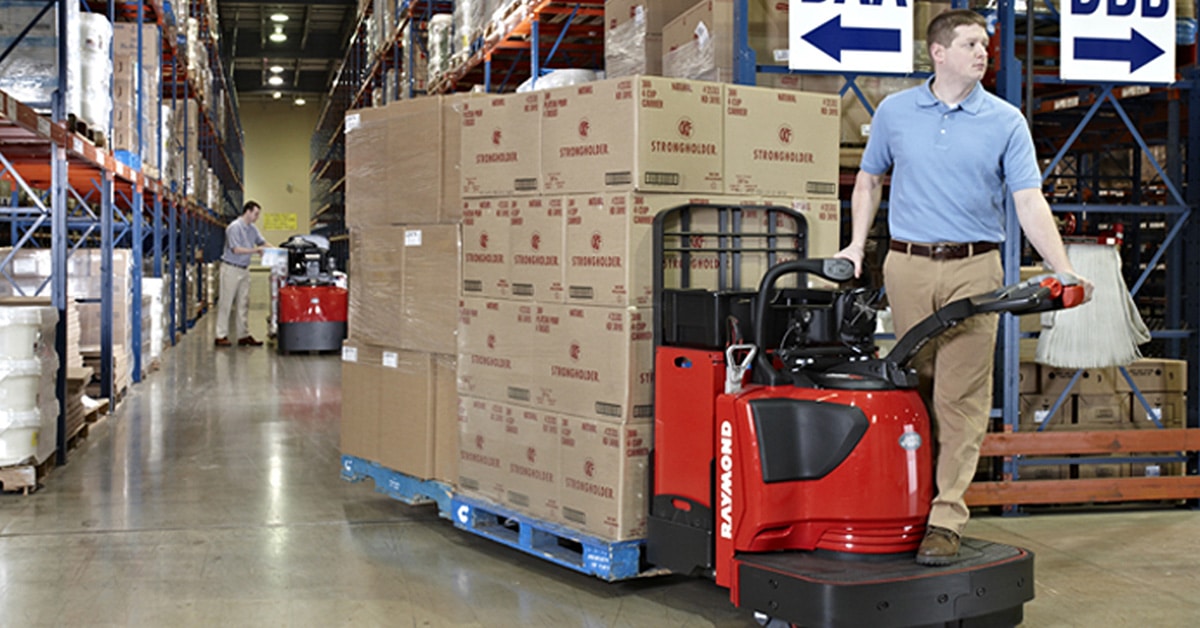If you’re looking for a pallet jack, you’ve come to the right place! When buying pallet trucks, there are a lot of things to think about, especially if you’re going to use them in a warehouse.
A pallet jack’s primary function is to transport pallets around a warehouse, industrial operation, or other location where pallets must be moved. However, you may want to educate yourself on which pallet jacks perform best in which environments, taking into account the size of your facility, the gross weight of pallets being positioned, the frequency of use, and a variety of other factors.
Pallet truck styles, qualities, limitations, and types of uses are discussed in the following section.
Manual Pallet Jacks
Basic, non-powered pallet jacks have been around since the 1920s and haven’t changed much since then. They’re made up of a steel body, a fork, and a hydraulic pump that’s operated by pumping the handle up and down.
A hand pallet truck operator positions the forks beneath the pallet, manually raises the pallet above the floor using the hydraulic system, and wheels the pallet to a desired location while maneuvering the pallet jack with the tiller.
Scenarios where only a few inches of lift height are required, such as storage room aisles, warehouse short runs, and similar applications may be a good fit for a non-powered pallet truck. Pallet jacks, unlike most forklifts, are moderately mobile and can fit in the back of a van or truck for product delivery. Many non-motorized pallet jacks have a load capacity of around 5500 pounds.
Manual pallet jacks are best suited for occasional use over short distances. Hand pallet jacks aren’t ideal for transporting loads over long distances, steep inclines, or uneven floor or lot surfaces. Workers must physically push or pull the machinery, which can be physically demanding.
Walkie Pallet Jacks
Although walkies are roughly twice the overall size of manual pallet jacks, they are still relatively small in scale and extremely maneuverable.
An on-board battery propels a walkie pallet jack. The battery also provides a powered assist for operating and elevating the forks. Operators no longer have to manually move pallets through the warehouse or pump the handle to raise loads.
They are referred to as “walkies” because the operator must walk to the back or side of the truck. Because the driver must keep up with the jack rather than catching a ride on it, the maximum speed of a walkie pallet truck is lower than that of a rider jack. This is actually an unintentional “safety feature,” because slower speeds reduce the impact of collisions.
Most walkie pallet jacks have a maximum capacity of 4500-6000 pounds.
Despite being more convenient than manual pallet jacks, walkies must be recharged on a regular basis because they are battery operated. Because there are more moving parts and points of potential electrical issues, they require more maintenance than manual pallet jacks.
Loading docks, staging areas, and short to mid-distance runs are the most common applications for walkie pallet jacks.
Rider Pallet Jacks
Rider jacks work similarly to walkies, but with the added benefit of a standing platform for the driver. Rider trucks have a limited number of controls, making them relatively simple to operate and requiring little training.
Instead of walking alongside or behind the pallet truck, drivers can step onto the platform. Rider trucks, as opposed to hand or walkie pallet jacks, are a better option for moving loads over longer distances. They’re ideal for continuous movement over larger areas, and they’re commonly found in bigger warehouses and manufacturing plants.
The operator platform is ideal for short trips, but it is not recommended for drivers who use them on a regular basis because it is small and forces the operator to stand in an unnatural position.
Center Riders
Center rider jacks are similar to rider pallet jacks, but they provide more operator protection and a more ergonomic experience. Instead of standing solely sideways, the driver can stand completely to the back or front.
Center riders are less maneuverable than rider pallet jacks and are commonly used for applications where the operator must travel in a straight line. They are frequently used in general manufacturing, storage, and beverage applications.
Pallet Jacks Near Me
Contact a material handling expert at Welch Equipment at (505) 822-8043 if you’d like to learn more about pallet jack options for your New Mexico warehouse, DC, or manufacturing facility.
Welch Equipment Company
5830 Midway Park Blvd NE
Albuquerque, NM 87109
(505) 822-8043
Serving Alamogordo, Albuquerque, Carlsbad, Clovis, Farmington, Hobbs, Las Cruces, Rio Rancho, Roswell, Santa Fe, South Valley and surrounding areas.



